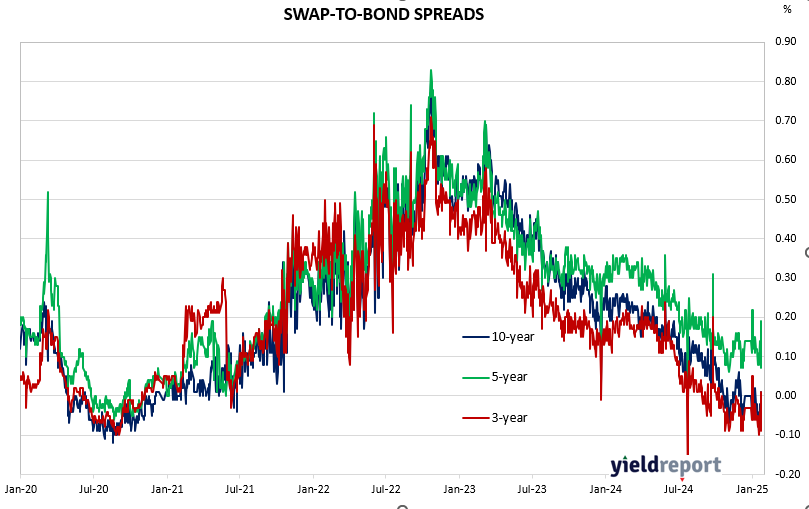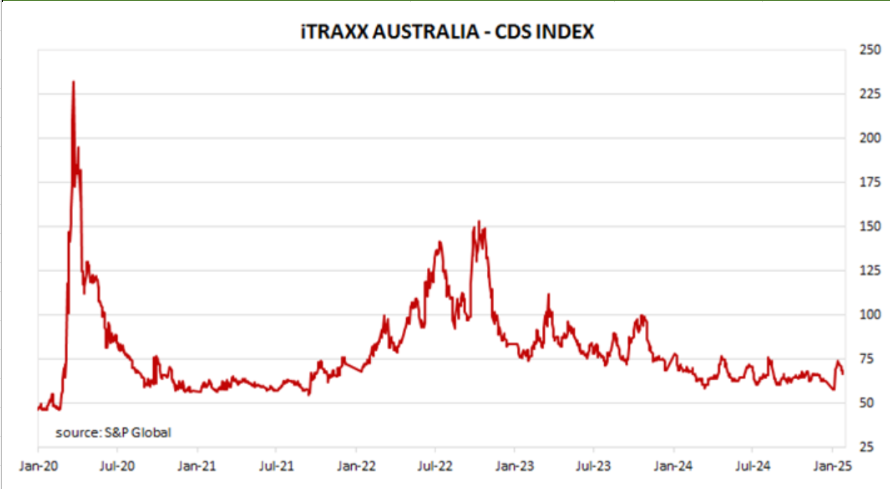Summary:
US Fixed Income
What is happening in the US is happening in Australia. But to use the US corporate bond market to make the point:- US corporate bonds are seeing less price movement than Treasuries, making the securities in some sense safer than their government counterparts, an unusual turn of events that seems to be stoking high valuations (historically low spreads) for company debt.
Since its mid-January high of 4.8%, the US 10-year treasury note has fallen by more than 50 basis points. Not only that, the decline has also been a story of whiplash. In contrast, US corporate bonds, both IG and HY, have been a relative sea of calm. While spreads are at near historical lows, investors are all in on yields, rationalising that the yields, tied with strong fundamentals and technical, are attractive enough to more than offset any perceived probable risk of spread widening.
Yes, there are cyclical factors at play regarding balance sheet strength and earnings outlook. But more importantly, there are multi-year structural factors that have shaped the IG and HY markets. Both are combining to suggest that 2025 may indeed be the year of bonds. And guess what? Inverse correlations between bonds and equities have been back for 6-months now after having been absent, effectively, for over 20-years since the beginning of 2003.
Structurally, both the IG and HY markets have been migrating up the credit ratings spectrum. In IG, Triple B’s are at a much lower percentage than it used to be while single A’s have increased. In HY, today’s market consists of 53% in BBs, compared to 38% pre–Global Financial Crisis. The transition to higher quality credit has been a multi-year dynamic, with lower quality credits generally transitioning to either private credit and/or leveraged loans.
But it is the technical structural factors that are most interesting. And the technicals in corporate debt are particularly strong. This is despite spreads being exceptionally tight. But there a several key reasons why spreads are historically tight and likely to remains so.
Firstly, the liquidity of the bond market is better than it’s ever been. The invention of the portfolio trade, the easy way to move baskets of bonds back and forth between investors and dealers and ETFs has enhanced liquidity and reduced the enhanced premium that investors need to own credit.
Secondly, as noted above, credit quality is higher than it’s ever been or better than it’s been recently, and particularly at the lower end of the market.
Thirdly, the duration of the bonds is significantly shorter than it has been in the past and by about two years. The shorter the bonds, the less spread an investor should require in order to be compensated out of treasuries.
One of the more widely-used measures of corporate risk, swap-to-bond spreads, largely finished a touch higher.
Figure 1 : Australian Corporate Bond Spreads

Source: S&P Global
Another measure, the cost of credit default swap premiums, declined over the week. The Australian credit default swap index, the iTraxx Australia Series 42, decreased by 5.00 points to 67.00 points.


